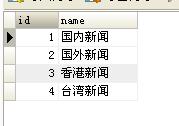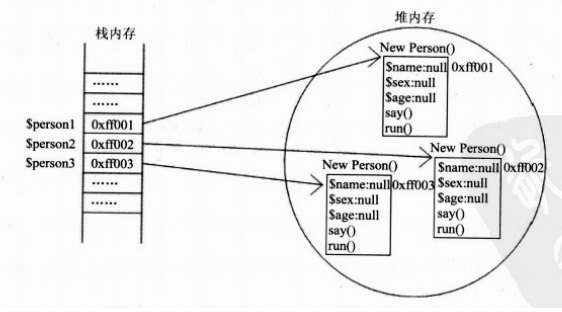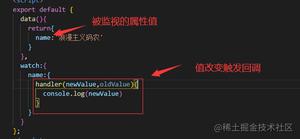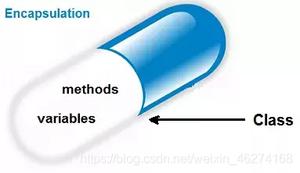Vue使用的一些实例

1.实现歌曲的点击切换。
<!DOCTYPE html>
<html lang="en"><head>
<meta charset="UTF-8">
<title>Title</title>
<style>
*{
padding: 0;
margin: 0;
}
ul{
list-style:none ;
}
li{
border-bottom: solid 1px gray;
}
</style>
</head>
<body>
<div id="music">
//这里的路径就是下面data里面的,默认是第一首。 绑定一个播放完成的事件。<audio :src="currentSong" autoplay="" controls="" @ended="nextSong"></audio>
<ul>
//循环拿到歌名和索引,将索引传给点击事件。<li v-for=\'(item,index) in songs\' @click="clickHandler(index)">
<h3>歌名:{{item.name}}</h3>
<h3>歌手:{{item.author}}</h3>
</li>
</ul>
</div>
<script src="../day2/vue.js"></script>
<script>
//下面的数据是通过数据库拿,这里模拟一下。var songs=[
{id:1,src:\'1.mp3\',name:"lala",author:"Ryan"},
{id:2,src:\'2.mp3\',name:"its my life",author:"alex"},
{id:3,src:\'3.mp3\',name:"gogogo",author:"egon"},
]
var music = new Vue({
el:"#music",
data:{
songs:songs, //歌曲库
currentSong:\'1.mp3\', //歌曲路径
currentIndex:0, //当前索引
},
methods:{
clickHandler(index){
//索引拿到后,去歌曲库拿到对应的歌曲路径。this.currentSong=this.songs[index].src;
},
nextSong(){
alert(1)
//当歌曲播放完成这个事件才执行。
//首先是索引+1,然后去到索引+1后的歌曲的路径。this.currentIndex++;
this.currentSong = this.songs[this.currentIndex].src,
}
},
computed:{
},
created(){
//通常用来做页面的初始化
}
})
</script>
</body>
</html>
2.下面使用计算属性来实现一下:
<!DOCTYPE html><html lang="en">
<head>
<meta charset="UTF-8">
<title>Title</title>
<style>
*{
padding: 0;
margin: 0;
}
ul{
list-style:none ;
}
li{
border-bottom: solid 1px gray;
}
</style>
</head>
<body>
<div id="music">
//这里的:src是绑定的计算属性,默认执行get方法。<audio :src="currSong" autoplay="" controls="" @ended="nextSong"></audio>
<ul>
<li v-for=\'(item,index) in songs\' @click="clickHandler(index)">
<h3>歌名:{{item.name}}</h3>
<h3>歌手:{{item.author}}</h3>
</li>
</ul>
<button @click="addOneSong">添加一首歌</button>
</div>
<script src="../day2/vue.js"></script>
<script>
var songs=[
{id:1,src:\'1.mp3\',name:"lala",author:"Ryan"},
{id:2,src:\'2.mp3\',name:"its my life",author:"alex"},
{id:3,src:\'3.mp3\',name:"gogogo",author:"egon"},
]
var music = new Vue({
el:"#music",
data:{
songs:songs,
currentIndex:0,
},
methods:{
clickHandler(index){
//这里只需要修改索引即可,下面的计算属性会监听到改变从而做出改变。this.currentIndex=index
},
nextSong(){
alert(1);
//播放完也是只需要给索引加1即可。this.currentIndex++;
},
addOneSong(){
//这里给歌曲库可以push一些歌曲,当然了下面的依然可以监听到,然后实时的在页面增加。(这里点击后,下面的111会打印。)this.songs.push( {id:4,src:\'4.mp3\',name:"666",author:"egon2"})
}
},
computed:{
currSong(){
console.log(111)
//实时监听songs数据的变化,添加数据songs变化了,所以这个函数会执行
//也就是增加一首歌,这个函数执行一次,111打印一次。
return this.songs[this.currentIndex].src
//只需要拿到索引的src即可。默认为0,这样上面的audio也就执行拿到了这个src。}
},
created(){
//通常用来做页面的初始化
}
})
</script>
</body>
</html>
3.组件的创建:
vue的核心基础就是组件的使用,玩好了组件才能将前面学的基础更好的运用起来。组件的使用更使我们的项目解耦合。更加符合vue的设计思想MVVM。
那接下来就跟我看一下如何在一个Vue实例中使用组件吧!
<!DOCTYPE html><html lang="en">
<head>
<meta charset="UTF-8">
<title>Title</title>
</head>
<body>
<div id="app">
<Vheader></Vheader>
<Vheader></Vheader>
<Vheader></Vheader>
<Vheader></Vheader>
<Vheader></Vheader>
</div>
<script src="vue.js"></script>
<script>
//组件的创建
Vue.component(\'Vheader\',{
data:function(){ //想要使用组件,data必须是个函数
return {
//必须要return,哪怕是个空对象
}
},
template:`<div class="header">
<div class="w">
<div class="w-l">
<img src="default.jpg"/>
</div>
<div class="w-r">
<button>登录</button><button>注册</button>
</div>
</div>
</div>`
})
var app=new Vue({
el:"#app",
data:{},
methods:{},
computed:{},
})
</script>
</body>
</html>
组件是可复用的Vue实例,并且带有一个名字:在这个例子中是 <Vheader>。我们可以在一个通过 new Vue 创建的 Vue 根实例中,把这个组件作为自定义元素来使用:
组件是可以复用的,所以可以写多个。
<div id="app"><Vheader></Vheader>
<Vheader></Vheader>
<Vheader></Vheader>
<Vheader></Vheader>
<Vheader></Vheader>
</div>
给Vheader组件中添加一个按钮,绑定数据属性count,然后你会发现点击按钮时,每个组件都会各自独立维护它的 count。因为你每用一次组件,就会有一个它的新实例被创建。
在创建组件过程中第一个参数是组件的名字,第二个参数是跟new Vue实例一样的options。跟实例对象不同的是有两点:
关于组件名的起名:https://cn.vuejs.org/v2/guide/components-registration.html
1、组件中没有el,因为el仅仅的是绑定Vue的根元素。
2、data属性不再是返回对象,而是返回一个函数。而且必须返回一个函数。
以上是 Vue使用的一些实例 的全部内容, 来源链接: utcz.com/z/376939.html









